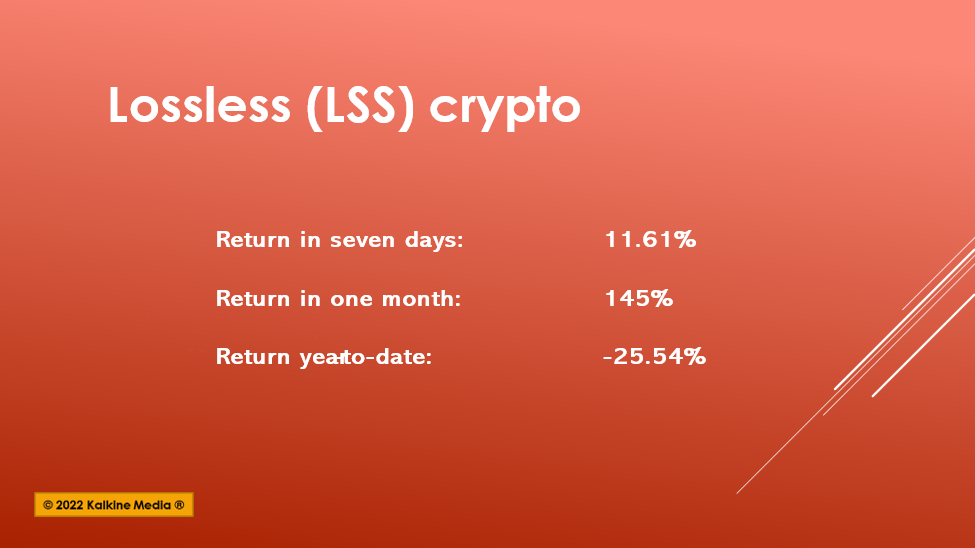Highlights
- Founded in 2021, Lossless is a DeFi (decentralized finance) hack mitigation tool.
- Its protocol freezes suspicious transactions based on fraud identification parameters and returns the stolen funds to the holder’s account.
- LSS token enables users to participate in the Lossless network.
The crypto market is prone to hacking. Although there are some 19,000 cryptos in the market, there aren’t any full-proof mechanisms to stop online frauds.
However, the Lossless (LSS) crypto offers to mitigate such threats. It claims to freeze suspicious transactions and return the stolen funds to the rightful owner.
Lossless has gained traction after it launched the Core Protocol, which secures users’ crypto holdings. It was launched on the Ethereum mainnet. But it also plans to introduce it on BNB Smart Chain, Polygon, Avalanche, Harmony, and Fantom blockchains in the coming weeks.
Cointelegraph reported that around US$1.23 billion worth of digitals assets were stolen by hackers in the first quarter of 2022, underscoring the magnitude of the problem.
What is Lossless crypto?
Founded in 2021, Lossless is a decentralized finance (DeFi) hacking mitigation tool for token creators. Its Core Protocol offers a critical infrastructure that can freeze suspicious transactions based on its fraud identification parameters and return stolen funds to owners.
Also Read: Why PLC Ultima (PLCU) crypto skyrocketed nearly 300% YTD?
It also provides the tool for other protocols to mitigate hacking. They can implement its code into their smart contracts to boost anti-hacking capabilities.
The bots developed by Lossless developers can scan transactions in the protocol. However, users have to pay the protocol 2,500 LSS tokens to generate a hack report.
In the case of a fraudulent transaction, the Lossless community can earn staking rewards, depending on the amount retrieved from hackers.
Also Read: Why is real-estate-focused Propy (PRO) crypto rising?
 Data Source: coinmarketcap.com
Data Source: coinmarketcap.com
Also Read: Why VeThor Token (VTHO) crypto jumped 299% today?
LSS token:
The LSS token enables users to participate in the lossless network. The token holders can stake and freeze fraudulent transactions, which are audited to ascertain if it was a hacking case.
The token can be traded on KuCoin, Gate.io, BKEX, PancakeSwap (V2), and Hoo crypto exchanges, as per Cointelegraph.
Also Read: Is Avalanche (AVAX) crypto rallying on fundraising news?
The LSS token’s market capitalization is US$33.4 million. Its circulating supply is 45.82 million, and the total supply is 100 million.
Lossless (LSS) was up 6.02% to US$0.7285 at 5:05 am ET on Friday. Its trading volume jumped 140.17% to US$6.99 million in the last 24 hours to Friday morning.
Also Read: Why is Terra (LUNA) crypto catching attention?
All You Need To Know About Mitigator Lossless LSS Crypto
Bottom line:
The cryptocurrency market is volatile and is prone to online threats. Hence, investors should exercise due diligence before investing in digital assets.
Risk Disclosure: Trading in cryptocurrencies involves high risks including the risk of losing some, or all, of your investment amount, and may not be suitable for all investors. Prices of cryptocurrencies are extremely volatile and may be affected by external factors such as financial, regulatory, or political events. The laws that apply to crypto products (and how a particular crypto product is regulated) may change. Before deciding to trade in financial instrument or cryptocurrencies you should be fully informed of the risks and costs associated with trading in the financial markets, carefully consider your investment objectives, level of experience, and risk appetite, and seek professional advice where needed. Kalkine Media cannot and does not represent or guarantee that any of the information/data available here is accurate, reliable, current, complete or appropriate for your needs. Kalkine Media will not accept liability for any loss or damage as a result of your trading or your reliance on the information shared on this website.




